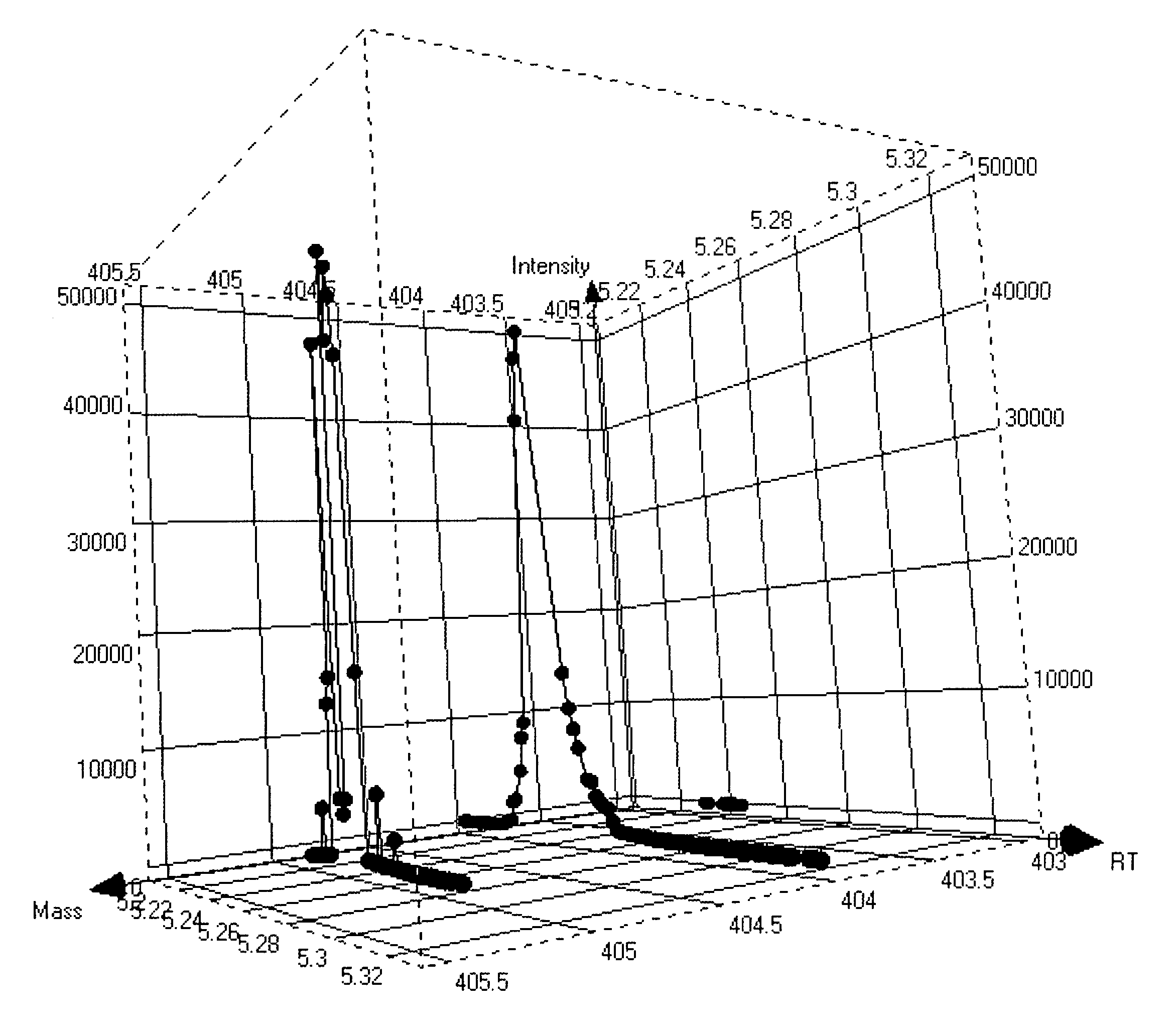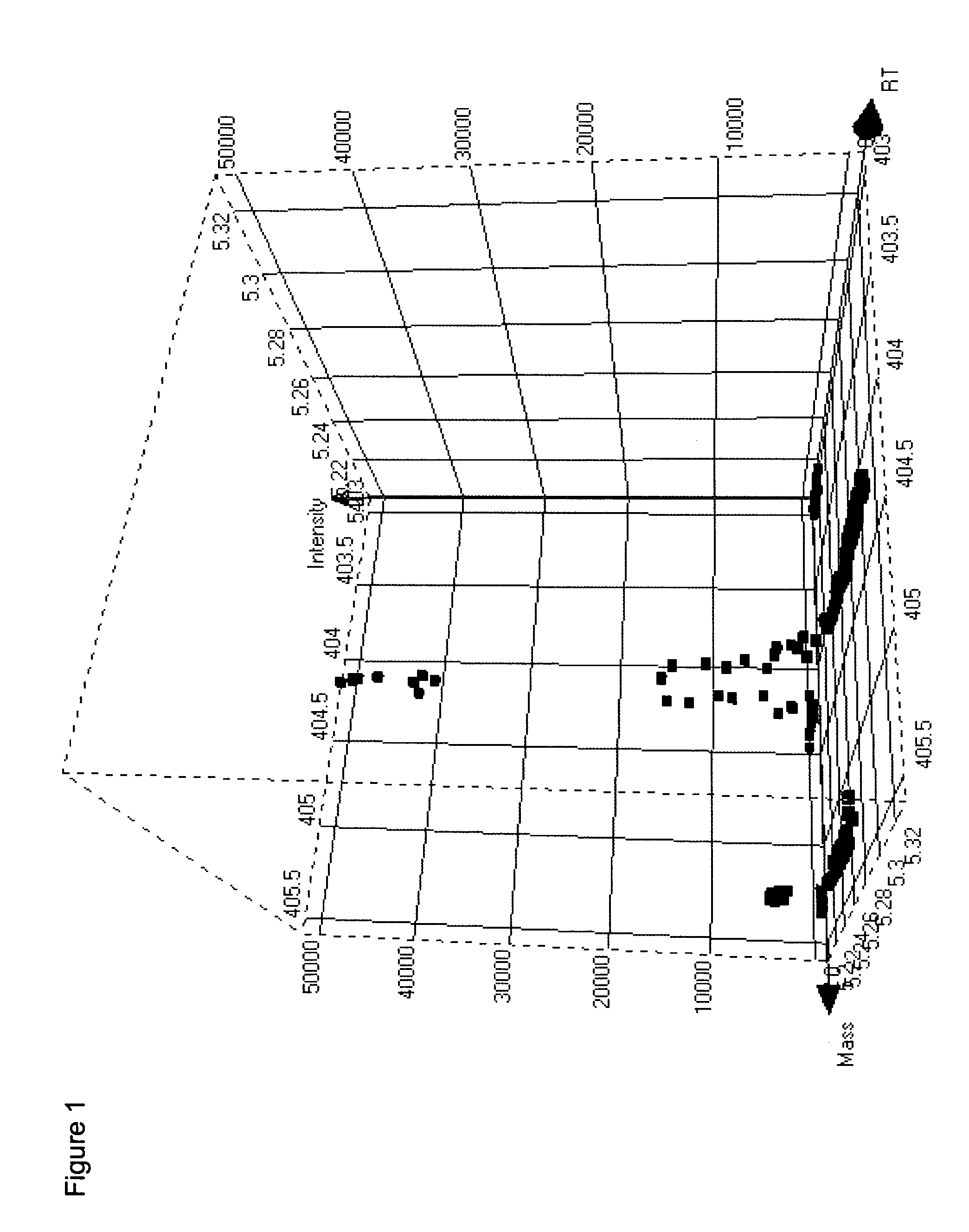System and methods for non-targeted processing of chromatographic data
a chromatographic data and non-targeted technology, applied in the field of systems and methods for processing hyphenated chromatographic data, can solve the problems of increasing sensitivity and resolution, difficult extraction of meaningful information, and complex chromatographic data sets, and achieves the effect of minimizing the influence of noisy data on the clustering algorithm and high nois
- Summary
- Abstract
- Description
- Claims
- Application Information
AI Technical Summary
Benefits of technology
Problems solved by technology
Method used
Image
Examples
example 1
[0090]The following illustrates processing of GC-MS data according to the methods of the invention.
[0091]Arabidopsis thaliana leaf tissue was derivatized for GC-MS analysis as follows. Plant tissue samples were lyophilized to complete dryness (24-72 hours) and the lyophilized samples were placed into the wells of a 96-well plate. 100 μL of 25% methyl trimethylsilyl trifluoroacetamide (MSTFA) in acetonitrile w / 0.1% trifluoroacetic acid (TFA) was added to each well and the plate was heat sealed to protect from moisture. The plate was placed on a shaker for ˜5 min and incubated at 60° C. for 15 min without allowing to reach dryness. 100 μL of 25:25:50 acetonitrile: dimethoxyethane: trimethylsilyl dimethylamine (ACN:DME:TMS-DMA) was added to each of the wells and allowed to shake for ˜1 min. The plate was incubated at 60° C. for 30 min. The sealing film was removed from the plate and 250 μL of dioxane added to each well. The plate was placed on a shaker for ˜1 min. The...
PUM
| Property | Measurement | Unit |
|---|---|---|
| retention time | aaaaa | aaaaa |
| retention time | aaaaa | aaaaa |
| completion time | aaaaa | aaaaa |
Abstract
Description
Claims
Application Information
 Login to View More
Login to View More - R&D
- Intellectual Property
- Life Sciences
- Materials
- Tech Scout
- Unparalleled Data Quality
- Higher Quality Content
- 60% Fewer Hallucinations
Browse by: Latest US Patents, China's latest patents, Technical Efficacy Thesaurus, Application Domain, Technology Topic, Popular Technical Reports.
© 2025 PatSnap. All rights reserved.Legal|Privacy policy|Modern Slavery Act Transparency Statement|Sitemap|About US| Contact US: help@patsnap.com



